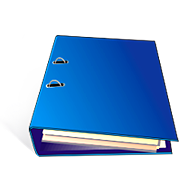Does your business still need a Quality Manual?

Does your business still need a Quality Manual?
By Alan M. Jones, CEO, Qudos Management Pty Ltd. February 2024.
Back in the day, every organization with a quality system had a quality manual. There was no alternative. A documented Quality manual was a mandatory requirement of the ISO 9001 standard. A business simply had to have one to achieve certification. It was as simple as that. The early versions of ISO 9001 also had quite onerous requirements for documented procedures. So, the Quality Manual sometimes included a whole series of those too. Alternatively, procedures were often kept in a companion Procedures Manual. By the way, we are talking here about manuals in the traditional sense. They were generally printed out in ring binders with carefully version-controlled inserts.
Of course, that has all changed now. Just about everyone has their documents stored electronically. Perhaps in a document management system, or at least in shared folders. The latest couple of editions of ISO 9001 have also dropped the earlier requirement for a documented Quality Manual.
However, most organizations with quality systems still have one. While there are exceptions, often those that we see when called in as consultants or auditors are very formal, bulky documents. They are generally not widely read or even known about by employees.
So, can you throw away your old Quality Manual?
Technically, Yes. You almost certainly can. It isn't mandatory for ISO 9001 compliance these days, and there's probably no internal or external pressure to maintain such a document.
You are probably expecting a "but" here, and you would be right.
Bringing the Quality Manual into the 21st century
We consider that a document that provides an overview of the Quality System can be very valuable to various interested parties. That would include new starters and your certification auditors. It needn't be a lengthy document - just an introduction to the system and a pointer to where to find further details - such as procedures, plans etc. As it does not need to include any confidential information, it could also be provided to clients as part of tender responses or where otherwise useful.
What about the name? Quality Manual sounds a bit archaic these days. Very few of us feel inspired to read manuals. As the document is really an introduction to the Quality System it called be named just that. Alternatively, it may be named something like Quality System Overview, or Welcome to our Quality System.
The new document does not have to be numbered with sections and sub-sections. We would suggest just user-friendly titles.
What should be included?
Here are some tips for sections to include in your new Quality System Overview:
About us
A general introduction to your organization - just like you might include on your web site.
Scope - or About our Quality System
ISO 9001 does require that you have a documented scope statement. Determining the scope of your system means considering where it applies and any boundaries to it. As that needs to be documented, this is as good a place as anywhere to put it.
Quality Policy
This is an optional inclusion. It's good to keep a Quality Policy as a separate document for ease of printing, adding to your web site, and otherwise distributing where required. At the risk of duplication, it can also be included here.
Operating context
ISO 9001 does not specify any documentation requirements to explain how the context of the organization is determined. However, it may be useful to include a brief summary of how the ever-changing internal and external context is determined, monitored and reviewed.
Interested parties
Once again, although ISO 9001 does not specify any required documents relating to interested parties, you might consider that some type of document would be useful. Some organizations would include an Interested parties table here. We generally suggest including just a 1 or 2 paragraph summary and maintaining a separate document - as it may be quite detailed and might include some commercially confidential information.
Our processes
A brief summary to illustrate your key operational and support processes. That may be achieved using a diagram or process map. Refer to where to find detailed process plans.
Our key people
Explain who are the people in the quality system - emphasising the role played by all workers to maintaining compliance and achieving continuous improvement.
ISO 9001 Clause matrix
A table that lists the clauses and bullet points on how you address the requirement. This will be a great aid to your certification auditor in getting an understanding of how your system fits together.
There may be other contenders for inclusion, but the above would make a concise but useful introduction to your system. Its a basic model that our consultants use when developing systems for our clients and similar to templates in Qudos ISO 9001 Quality Toolkit.
What about integrated systems?
Our general view is that the same should apply as above. None of the other major ISO management system standards require manuals. The go-to approach would be to expand the Welcome to our Quality System document to become Welcome to our Management System with a few little enhancements.
So, if your organization has one of those old-style Quality Manuals, hopefully, the above will offer some inspiration to give it an update!
Talk to us about developing or updating your Quality Management System
Click the LinkedIn Follow button below to receive notification of further articles.
If you found this blog informative, please share it with a colleague or business associate.


